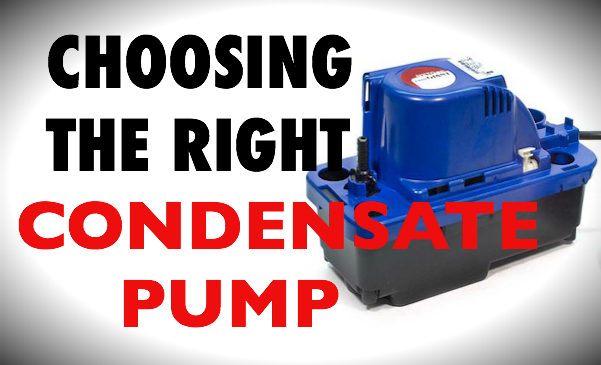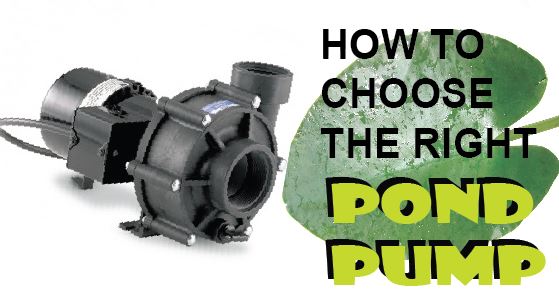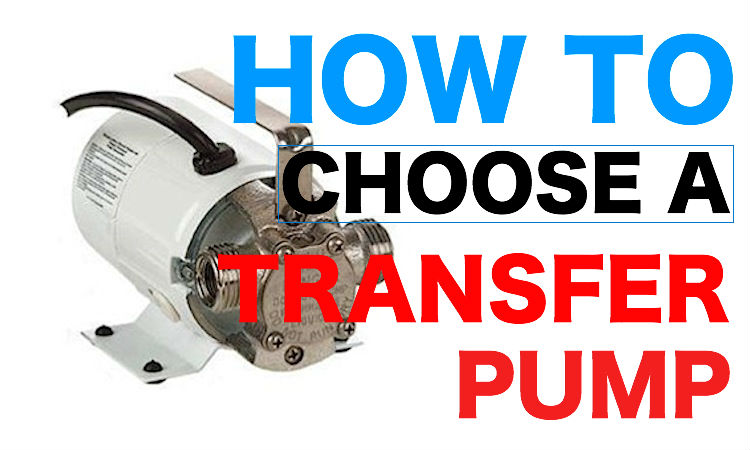-
Condensate Pump Buyers Guide
October 7, 2013Dehumidifiers, drinking fountains, soda machines and ice makers all produce condensate that will accumulate and cause damage unless it is removed. Large climate control and refrigeration systems, often produce large volumes of condensate requiring continual draining and disposal. View our condensate pump video Video used courtesy of Steve Markee Condensate pumps are designed to move the water produced by moisture-prone equipment to a holding tank before routing it to a sewer or drain. The holding tank collects condensate liquid until it rises to a level that raises an internal float switch which activates the pump until the liquid level in the tank is lowered. Condensate pumps are available in centrifugal, peristaltic and other styles and range in size from small fractional horsepower units to large industrial pumps that recycle condensate water within a system. The output of small condensate pumps is usually routed to a sewer or drain. Because condensate water can be very hot and contain acids and other contaminants it may require careful handling and disposal according to local regulations. When correctly installed and maintained condensate pumps usually provide years of trouble-free service. Pump Products has an inventory of quality condensate pumps and accessories suitable for use in a wide range of applications. Choosing A Condensate Pump The first step in choosing the right condensate pump is to determine if your application is subject to local condensate handling and disposal regulations. Select a model that operates within these guidelines. Figure out the lift requirement for the pump by identifying where the pump will be mounted and where the discharge point will be. Condensate flow will decrease in accordance with the height it must travel until maximum, or "shut-off" lift is reached. Select a pump with a maximum lift rating that is suitable for your application. Check your equipment service manual to determine the condensate output and choose a pump with sufficient capacity. As a general rule, the output flow of the pump should be at least double the input rate from the appliance. Ascertain your voltage requirements. Most pumps are available in 115 or 230V. Some commercial grade pumps are available in 460V. If property damage or personal injury can result from an inoperative or leaking pump, choose a condensate pump with an alarm or auxiliary switch backup system or install one with your pump. TIPS Unplug the pump and clean out the reservoir at the beginning and end of each heating season. Use a commercial algaecide and follow manufacturer’s instructions. Never pump flammable liquids Do not handle unit with wet hands or while standing in water Do not expose pump or discharge to freezing temperatures For detailed specs, manuals and reviews of the condensate pumps we stock and ship nationally, visit our product pages at www.pumpproducts.com or call us for details: 1-800-429-0800.
-
Pond Pump Buyers Guide
October 5, 2013A properly sized pump will ensure the well-being of a pond’s aquatic life, optimize its beauty and keep utility costs down. The first thing to consider when selecting a pond pump is whether it will be used primarily for a waterfall, fountain display or for filtration and recirculation. Fish pond pumps are often required to perform at a higher capacity than fountain pumps while waterfall pumps must be sized according to both pumping capacity and waterfall height. View our pond pump video Video used courtesy of Living Water Aeration Selecting the Right Pond Pump Because all pond pumps are sized in gallons per hour (GPH), knowing the volume of water in your pond is key to ensuring adequate circulation. Insufficient circulation can result in stagnant water and an environment unable to sustain fish and plants. As a general rule, pond water should be circulated about once every hour. Consequently, a pond containing 500 gallons requires a pump rated at a minimum of 500 GPH. Total pond gallons can be determined by connecting a water meter to a garden hose while initially filling the pond. To calculate the approximate volume, multiply the pond’s length in feet x width in feet x depth in feet x 7.5. In addition to circulating water, pond pumps are often required to lift water. Head height is the vertical distance the pump must raise water above the surface of the pond. The greater the head height, the harder your pump will have to work. To determine your head height, calculate the following: A = The vertical height from the top of your pump to the top of your water stream. B = Total feet of tubing connecting the top of the water stream to the water filter. C = Number of 90 degree bends and reducers. D = Number of filters and miscellaneous adapters you will be pumping water through. (Both C & D put additional pressure on the pump.) Plug your pond’s coordinates into the following formula: A + (B / 10) + (C / 2) + (D / 4) = Approximate Head Pressure For Example: A = Vertical Height = 4’ B = Total Distance = 8’ C = Number of 90 degree bends and reducers = 2 D = Number of misc. adaptors = 6 4 + (8 / 10) + (2 / 2) + (6 / 4) = 7.3 Total Dynamic Head Pressure Most pumps are sold with flow charts illustrating how they perform across a range of measures. Other factors to consider when choosing a pond pump include. Width of Spillway: In waterfall applications, 1 inch = 125 GPH. Fish Load: In fish pond applications, maximum fish load is approximately five inches of fish per five gallons of pond water. Voltage /Energy Consumption: Because pond pumps are designed to run constantly, every watt will add substantially to utility costs. POND PUMP TYPES Magnetic Drive Pumps are the most energy efficient pond pumps and, though costlier than direct drive models, they quickly pay for themselves in utility cost savings. Magnetic drive pumps are oil-free and therefore safe for ponds stocked with fish. They are not ideal for high head applications due to their limited ability to push water to significant heights. Direct Drive Pumps are better-suited for powering water features with high head height. These motor-driven pumps tend to cost less than their mag-drive counterparts but require a substantial amount of energy to operate. Unlike mag-drives, direct drive pumps are often self-priming and will draw water to them. Submersible Pumps are designed to run while quietly submerged in a pond. Their unobtrusiveness lends itself to naturalistic settings. Maintenance, however, can be inconvenient as submersible pumps must be periodically pulled from the water and cleared of debris. External Pumps require less maintenance than submersible pumps and tend to have a longer life. They are often loud and have to be camouflaged but require less energy than submersible pumps, particularly in larger applications. A 6000 GPH external pump can run on 450 watts, where as a standard submersible pump generally requires 750 – 1200 watts. TIPS When shopping for a pond pump for a stream or waterfall, bigger is better. Make sure its head capacity, or lift, is well above the height you've planned for your falls. Check the pump cord length. Some codes require the electrical outlet for a water feature to be at least 6 feet away from water. Consider purchasing two pumps at once. An extra pump could save your pond if your existing pump should fail. For detailed specs, manuals and reviews of the pond pumps we stock and ship nationally, visit our product pages at www.pumpproducts.com or call us for details: 1-800-429-0800.
-
Transfer Pump Buyers Guide
October 3, 2013Transfer pumps are used to move fluids from one location to another. These lightweight, portable units are suitable for a wide range of applications including pool cover drainage, livestock watering and wet-vac projects. They are also an effective means of boosting water pressure and draining hot water tanks. Choosing the Right Transfer Pump Transfer pumps can be applied to a variety of liquids. Thin liquids such as water can be moved with basic pumps while thick liquids such as oil require specialized pumps. Two important things to consider when choosing a transfer pump are: a) the type of job you will use the transfer pump for b) the size of the pump will you need A transfer pump obtained to drain a waterbed may not be suitable for draining a hot water tank or flooded basement. Check a pump's specifications and match them against the power, liquid volume and temperature demands of the task you to apply it to. A transfer pump is activated by priming the outlet and inlet pump, connecting the water suction attachment, and connecting the pump to a power source, making sure the pump is located in a dry area. Most transfer pumps are non-submersible and should not be used in running showers, saunas, or other wet locations. For optimum efficiency, a transfer pump should be placed as close to liquid and power sources as possible. So, along with ambient moisture, cord length is an important consideration when choosing a transfer pump. Transfer pump's are available in a range of styles and power options, with variations in basic features including priming options, maximum temperature settings and fitting settings. Pump Products carries a selection of transfer pumpsto suit every application. TIPS Use reinforced plastic tubing or metal pipe for the suction side of the pump to prevent collapse of the suction piping. Do not coil or kink connection hoses. Discharge piping should never be larger than suction piping. Be sure all connections are air tight. Unplug the pump before all the water is completely gone. Do not run the pump dry. Impeller and mechanical seal damage will result. Clean and flush your pump after each use. Chemical residue can corrode the inside of your pump. For detailed specs, manuals and reviews of the transfer pumps we stock and ship nationally, visit our product pages at www.pumpproducts.com or call us for details: 1-800-429-0800.
-
New Online Pump Retailer to Offer Low Price Guarantee
October 3, 2013This November online pump, motor and generator store, PumpProducts.com, will enter the e-commerce market with an innovative cost-cutting deal. If within 30 days of a purchase at PumpProducts.com, a customer finds that product nationally advertised for less, the company will refund 110% of the difference. The online market is fast-moving and competitive and prices are changing all the time," says General Manager Ed Drejman. "We're offering a 110% refund on cost differential to show that we're serious about maintaining the low prices on the web. As an added incentive to on-line shoppers, we're going to offer free shipping on qualified orders over $299." Pumpproducts.com will extend a large inventory of hydronic pumps, repair parts and accessories, featuring products by Armstrong, Zoeller, Liberty, Hydromatic and other leading manufacturers to residential, commercial and industrial customers. The company will sell pumps for the full range of wastewater, HVAC, recirculation and irrigation applications. An extensive selection of electric motors and generators will be available as well. "PumpProducts.com will cater to on-line shoppers who have a good idea of what they need and are primarily interested in getting quality equipment at the best price," says Product Expert Craig McCrickard. Like many of the company's staff, McCrickard brings extensive pump industry experience, including hydronic design, configuring and application to the task of stocking and selling pump products through the site. "We set out to raise the bar on what on-line shoppers are offered by cherry-picking an inventory consisting of the best quality merchandise and presenting it alongside the best product information on the web," says McCrickard. "The Low Price Guarantee is our way of offering customers the best possible e-commerce deal." PumpProducts.com is the digital portal of an established Northeast pump distributor with 500,000 square-feet of warehouse space and an extensive inventory of repair parts and electric motors. In addition to guaranteeing the low price available on the internet, the company also offers express delivery across the United States. "We aim to be the go-to supplier of leading brand pumping equipment for the commercial, industrial and residential markets and the way to do that is by outperforming everyone else out there," says McCrickard. "The Low Price Guarantee is the 'wow factor' we think will separate us from the pack."









